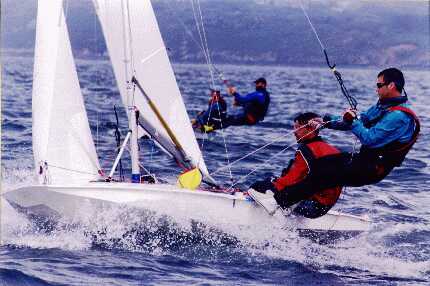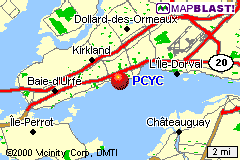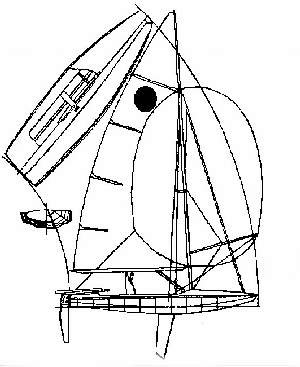|
What's a Fireball?Many fireball are amateur built, a good indication of the simplicity of
the design. The Fireball hull and sail plans are of strictly one design,
but the class rules allow you to adept the position and design gear to
suit your own weight and style of sailing. Anyone can sail a Fireball. Age or sex does not determine ones ability
to be competitive. Some country's leading Fireball sailors are women. The
class also has a strong contingent of sailors over forty. Winning Fireball races is not really a question of having an amateur or
professionally built, plywood or fibreglass, old or new boat, but rather
comes down to mastering the art of tuning, and sailing better than your
competition. Fireballs are a delight to sail in strong winds. The thrills of trapeze
and spinnakers are hard to match in any type of sailboat or board. If
capsized, the boats are easily righted, and can be sailed without bailing.
The weight and strength of the crew is not as important as the tuning of
the boat. The trapeze and sail handling requires skill rather than
strength. Fireballs are in international class, with fleets in every region of
the world, and associations conducts yearly World, Continental, National
and State Championships.
We are a keen and helpfull bunch who would be more than willing to talk boats and give you a ride. We sail every Tuesday and Thursday evening. Come and find out
why "Balling is truly more fun" Getting betterOurs is a unique and endlessly fascinating sport. It requires unparalleled periods of concentration and involves an infinite complexity of factors. Decide how well you want to do. You will not win the Worlds often without the best equipment. You can compete well in the races around here with an old boat that has been properly equipped and, a keen crew or two. Crew is key, you'll need the help. Knowing how well you want to do will also help you establish the right mental attitude. To excel you will need to be at peace with yourself. 1) First thing then is to get your boat right. Don't waste time here, just park your boat next to your best competitor's and make yours like his (it'll take a weekend). You'll know your boat is properly fitted out if everything works in 20 knots - cleats, pulleys, ropes, centerboard gasket (determining that will take another weekend but it has to be a (windy one). On a typical old Fireball this will require replacing most everything that moves and much repositioning. You will need to be relaxed about your boat's abilities if you are ever going to become one with it and your natural universe. 2) Second, tune your boat the same as your best competitor - mast rake, rig tension, spreader angle, jib fairlead position (one hour max.). You need to believe that you are as fast as anyone. Dennis Connor's book, No Excuse to Lose, applies here. 3) Go sailing. Practice tacking, gibing, accelerating from a standstill. If you and your crews can handle your boat in strong winds you will have a big edge on most of our fleet. You will be sure of your seamanship when you can do a weed check in 20kts of wind with the chute up. Develop a checklist (going slow? check for weeds, and if the boomvang is too tight; not pointing? check for weeds, and if the boomvang is too loose). The best sailors are able to enter a state of consciousness that allows them to process all the inputs in their semi consciousness so that they react intuitively to, for example, waves, wind shifts, and tactical patterns. To get there you have to be able to execute maneuvers without having to think about them. 4) Make your underwater foils and the first third of the underwater surface of your hull very fair. (Another reason for having more than one crew.) Smooth foils will help to keep the weeds off. 5) Now you're ready for a new jib, but just borrow a main and spinnaker. The only reason people like me buy new ones is because it is psychologically encouraging. Your underwater foils are far more important. 6) There are things you can learn from books - you must know the rules and the new ones are simple. Also the Fernhurst series of books (they're really pamphlets with pictures) are great; Dinghy Helming, Dinghy Crewing, Tuning Your Dinghy are all indispensable. An appreciation of Buddhism may help. 7) The only thing left is to win some races. Start first, get the first shift off the line right, cover the fleet and execute your turns well. That should about do it. Most important, win or lose, thank your crew. To develop the right state of consciousness you will need to be philosophical about your defeats. It is in the nature of our sport. Sailing involves so many variables no one can expect to win or even to do as well as hoped all the time. (George is a tenacious competitor from PCYC with a keen desire to get out in front of the fleet. He is known to have an inherent 6th sense at finding pressure in light and shifty wind conditions, figuring out wind shifts and knowing when weeds get caught on his rudder.)
|


 The Fireball is a high performance two-person
sailing dinghy offering exciting sailing, intense competition and a great
social life off the water. It has a wide appeal as it is simple to build,
reasonably priced and not to demanding to sail.
The Fireball is a high performance two-person
sailing dinghy offering exciting sailing, intense competition and a great
social life off the water. It has a wide appeal as it is simple to build,
reasonably priced and not to demanding to sail.


